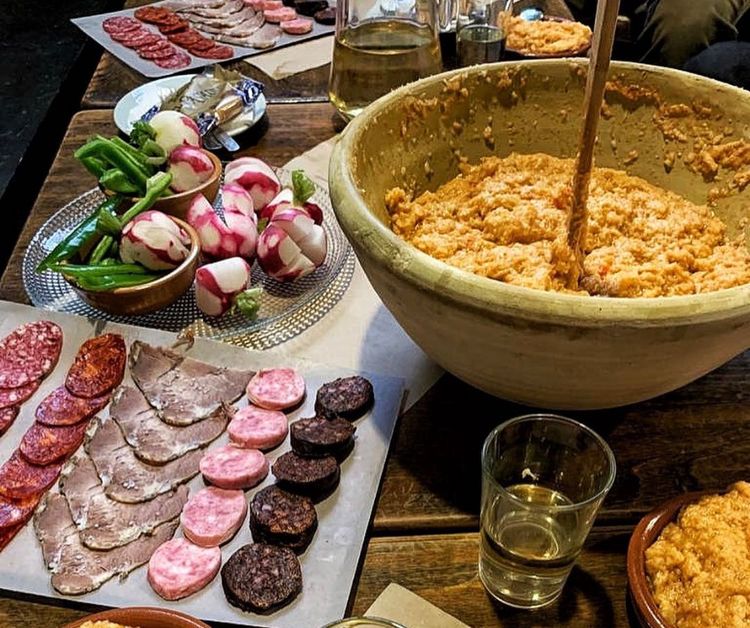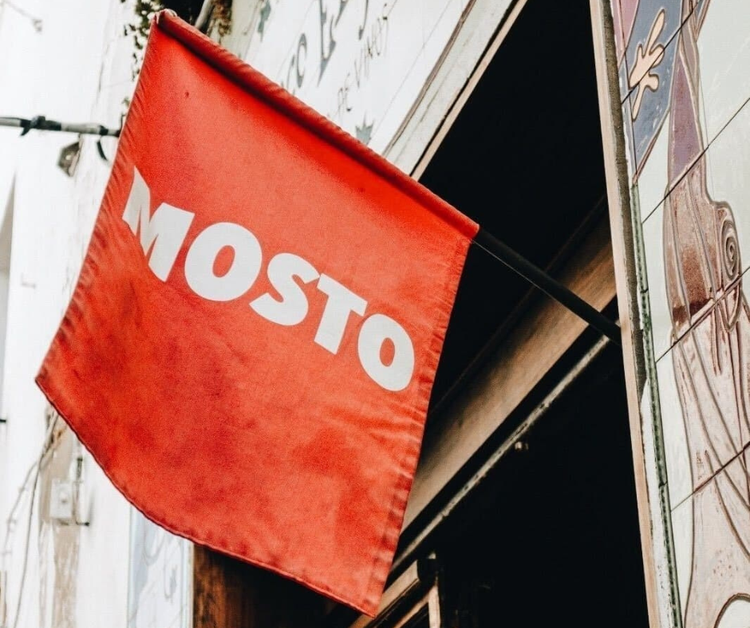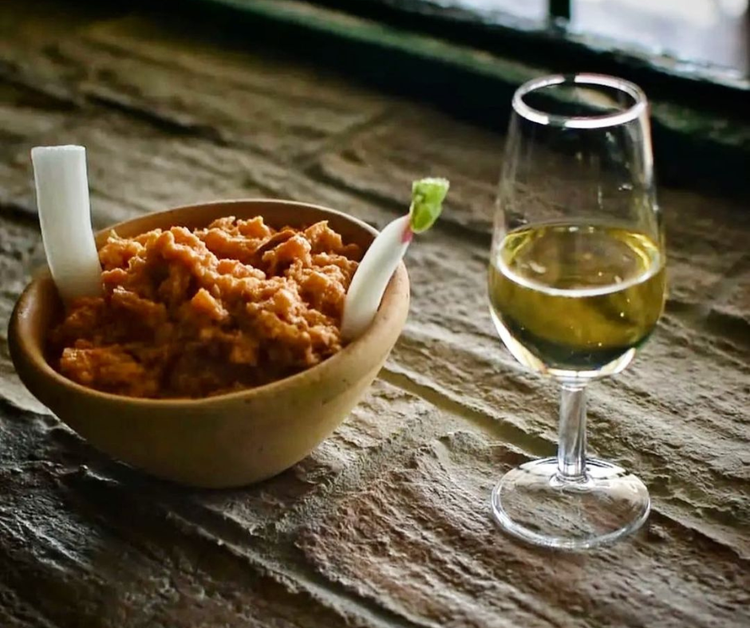The season of mosto (must, or first fermentation of wine; literally “young wine”) in the Marco de Jerez, or Sherry region, is a vibrant autumn festival of aromas and flavours that awaken the senses. At this time of year, the bodegas are bustling with activity as they prepare to assess the character of the new wines. The must, fresh and naturally sweet, is not only a prelude to the future wine, but also a celebration of the winemaking tradition that characterises Jerez. Everywhere from local taverns to large bodegas, the must enjoys its moment as the undisputed protagonist, inviting everyone to savour its unique essence and to immerse themselves in the rich culture that surrounds the winemaking process.

Why does November mark the start of the new wine season?
November is an important month in the Marco de Jerez wine cycle because it marks the beginning of the new wine season. The process actually begins earlier, with the grape harvest, and continues with fermentation, but in November, due to the lower temperatures, the new wine has completed its initial fermentation, has clarified naturally, and begins to show more defined organoleptic characteristics.
What is mosto (must)?
What is the difference between wine and must?
In the Marco de Jerez, must has a particular meaning that differentiates it from the general concept of must in other wine regions. While elsewhere must is simply unfermented grape juice, with no alcoholic content, in the Marco de Jerez, on the other hand, it is a young wine that is already fermented, with its own identity.
Sherry must in Jerez results from the natural fermentation process of grape juice, and can reach an alcohol content of between 11 and 12.5°. It is consumed a few weeks after fermentation, generally from mid-November until spring. Sherry must is therefore a seasonal drink, while Sherry wine is the final product destined for the market.
The main differences between Sherry must and Sherry wine lie in the production process. Must is the direct result of fermentation, whereas Sherry wine undergoes additional fortification and ageing processes. In addition, must is consumed young, whereas Sherry wine requires an ageing period of at least two years. The alcohol content also makes a substantial difference: while must varies between 11-12.5°, Sherry wines tend to have a higher alcohol content as they are fortified (from 15°). Finally, in terms of the organoleptic characteristics, must has a slight cloudiness and primary aromas from the grapes, while Sherry develops more complex aromas and flavours, thanks to ageing in wooden barrels.

The transformation process: how must turns into wine
The harvest and obtaining the must
The process of transforming Sherry must into Sherry wine is a traditional art that combines ancestral techniques with modern methods. This system consists of several key stages, the first of which involves harvesting and crushing.
The winemaking process begins with the grape harvest, which generally starts in early August and lasts until the end of the month. The grapes, mainly Palomino Fino, are loaded into hoppers whose augers break the skins.
The must is obtained through pressing in different stages, obtaining three different types:
- First yema (pressing): this must is obtained at low pressure, ideal for biologically aged wines; that is, Fino and Manzanilla Sherries.
- Second yema: must obtained at higher pressure, destined for Oloroso Sherry.
- Pressed must: used for wine alcohol or other products not covered by the D.O.
Fermentation: the secret behind the new wine
Fermentation is the initial process that transforms the grape must into base wine. It is a crucial phase in the production of Sherry wines, as it lays the foundations for their unique characteristics and diversity. During this process, yeasts convert the sugars in the must into alcohol. This transformation is fundamental, because it gives rise to the dry base wine that will serve as the starting point for the different types of Sherry wines.
This process is usually completed by the end of November and, shortly afterwards, some wines will spontaneously develop the velo de flor. This layer of yeast strongly influences the biological ageing process, and is capable of modifying the organoleptic characteristics of the wine.
Fermentation in Sherry wines not only transforms the must into wine, but also establishes the necessary conditions for the subsequent processes that give these wines their distinctive character and wide range of styles.
The importance of must in the Marco de Jerez
Tradition and wine culture in Jerez
Must has great cultural significance in the region, denoting the start of the wine season, and accompanied by local festivities. The must’s arrival marks a celebration rooted in jerezano culture. There is a popular saying, "Por San Andrés, el mosto vino es", indicating that by the end of November (Día San Andrés, or St Andrew’s Day, is on 30 November), the must is ready for consumption.
As well as a centuries-old custom, this young wine also represents an important economic component that links wine production with the region's gastronomy and tourism. While in other regions must is unfermented grape juice, in the Marco de Jerez it has a much stronger, more defined character: a young wine with its own identity, representing a crucial stage in the process of making the region's famous wines.
The impact of must on wineries and the local economy
The Sherry must season: restaurants and casa viñas celebrate the new wine
Sherry must is not just a drink, but a cultural and economic phenomenon. Wine cooperatives produce new must to sell to Marco de Jerez wineries for the subsequent production of Sherry wines. Restaurants and casa viñas (vineyard houses converted into eateries) use “the must season” as a motive to invite visitors to enjoy the new wine, accompanied by typical vineyard dishes and stews, such as ajo campero or berza jerezana (see below). There is a movement to promote the "Must Route", which encompasses various restaurants in the region (see below), and afford it the same importance as the Beaujolais Nouveau festivals in France.
In terms of events themed around the must season, the Sherry and Manzanilla Regulatory Council has been organising the Concurso de Mostos del Marco de Jerez (Jerez Region Must Competition) for 11 years. Prizes are awarded to the young wines from that year's harvest that show the highest levels of excellence. In order to recognise the diversity that characterises the Marco, there are two categories in this competition: musts from registered wineries and artisanal musts made by registered winemakers.
Gastronomic experiences: typical vineyard stews
The must season in the Marco de Jerez offers a unique gastronomic experience, focussed on traditional stews and casseroles that pair perfectly with the region's young wine.
Star dishes of the must season

Ajo campero
Ajo campero is considered the star dish of the must route. It is a hot salmorejo, made with stale bread, tomatoes, peppers, garlic and olive oil, and is traditionally prepared in large quantities in a lebrillo (large round earthenware vessel) and served with a raw radish.
Berza jerezana
This stew of gypsy origin is another essential dish. It combines chickpeas and beans with various vegetables such as golden thistle, chard and celery, and various types of pork (loin, bacon, chorizo and black pudding).
Menudo
In the province of Cádiz, menudo refers to a tripe dish. The local version is characterised by chickpeas and a spicy flavour.
Other stews and accompaniments
In addition, the gastronomic pairings of must encompass a variety of cured meats, game, rabbit and bull's tail. In some establishments you can also find rice with prawns.
The best places to enjoy must in Jerez
During the must season, the experience extends beyond gastronomy. Everywhere from take-away establishments to restaurants the true essence of Jerez’s culture can be enjoyed, with an atmosphere steeped in wine and flamenco, adding a touch of folklore to this unique culinary experience in the Marco de Jerez.
Traditional restaurants such as ventas (simple roadside eateries) and tabancos (Sherry bars) are the ideal places to enjoy these dishes. Be aware that some such establishments are only open for a few months of the year, coinciding with the must season. In the city centre, you can enjoy a glass of must at Tabanco El Pasaje or El Bujío. However, for a more authentic, close-to-the-land experience, you can visit ventas in the area around Jerez. Here are a few must-visit examples. Note that “mosto” is the word for a restaurant serving must, as well as the wine itself.
Mosto El Corregidor Viejo
[FW5] Cañada del Moro, s/n, 11407 Jerez de la Frontera, Cádiz
Mosto de Santa Teresa
Ctra. CA-3104, Km 1.5, 11591 Jerez de la Frontera, Cádiz
Mosto Domi
Ctra. de Jerez a Trebujena, Km 2, Finca Nuestra Señora del Pilar, 11404 Jerez de la Frontera, Cadiz
La Blanca Paloma
Ctra. de Jerez a Trebujena, Km 2.5 (Cañada del Moro), Jerez de la Frontera, Cadiz
Mosto La Sacristía
PR55+2Q, 11400 Barriada de la Polilla, Cádiz
If you visit the Marco de Jerez during the must season, you will have the chance to immerse yourself in a feast of flavours and traditions, where young, fresh wine is the perfect accompaniment to the fiery passion of flamenco and the rich local gastronomy. A unique experience of wonderful tastes, inviting you to enjoy the warm and vibrant atmosphere that characterises this emblematic Andalusian region.





